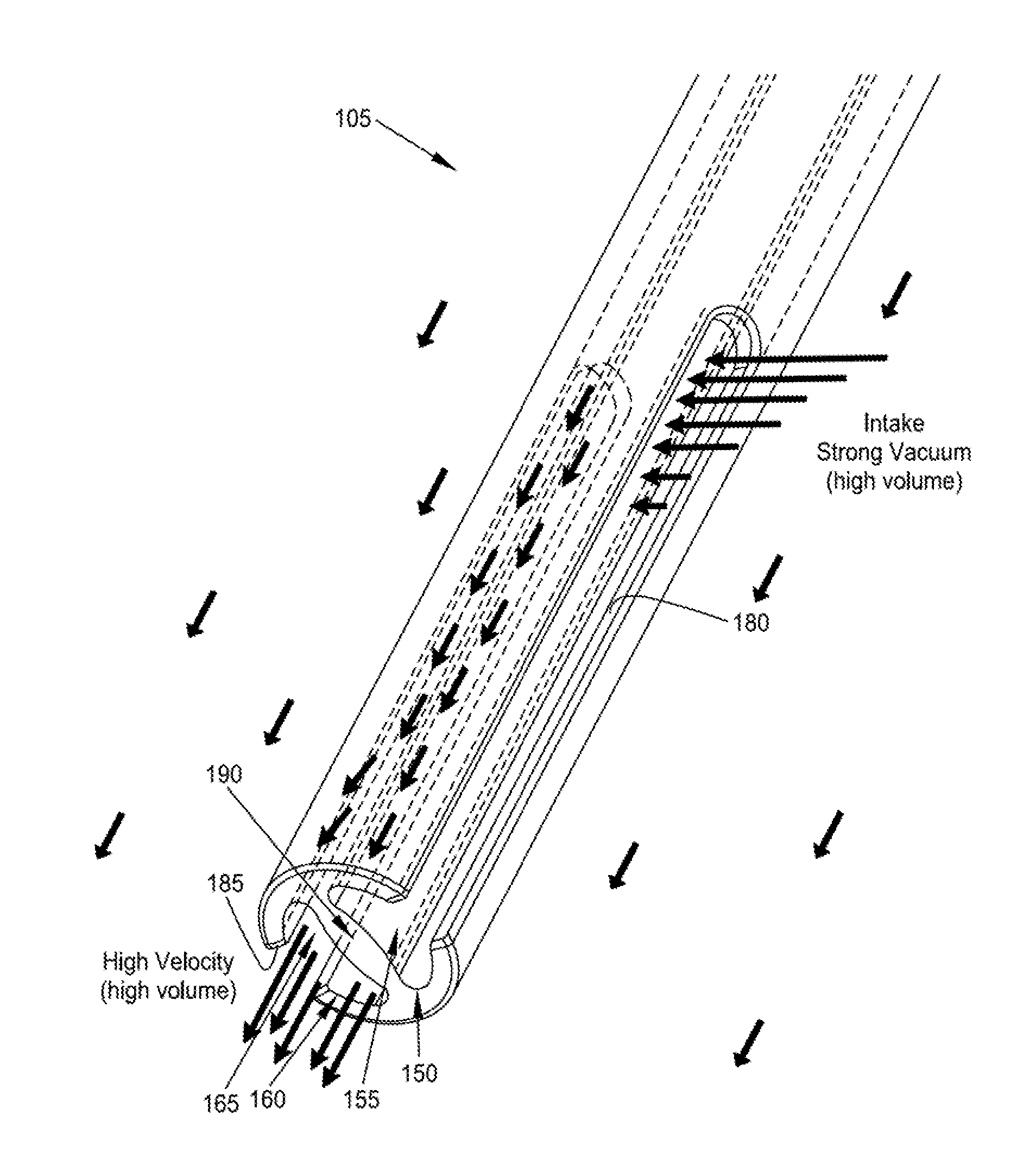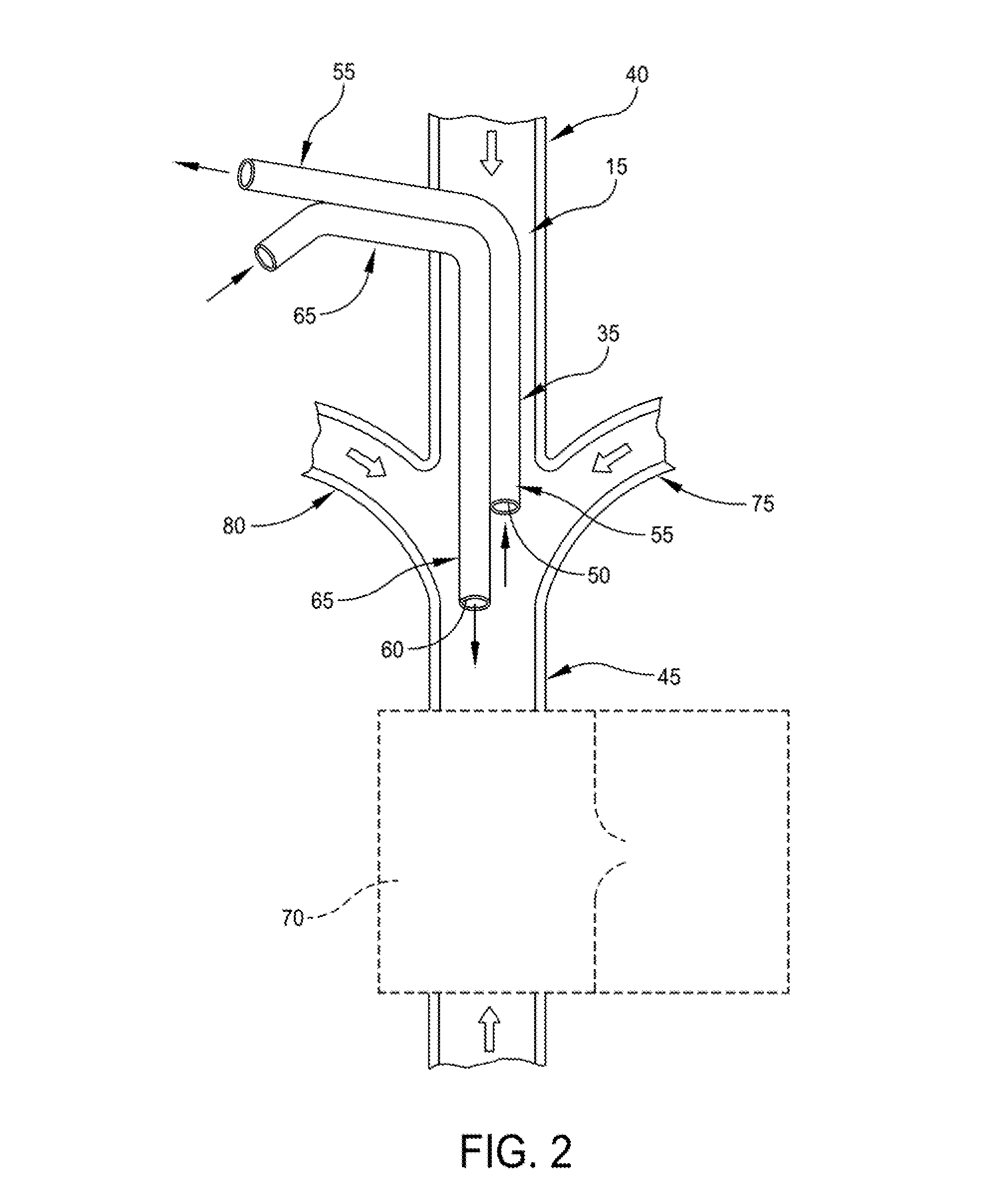Method and apparatus for the dialysis of blood
a technology of dialysis and blood, applied in the field of blood dialysis, can solve the problems of reducing the efficiency of hemodialysis, requiring repetitive access to hemodialysis treatment, and dialysis sessions would need to increase significantly in duration and/or frequency, so as to minimize the possibility of recirculation of dialyzed blood, reduce the possibility of clot removal, and minimize the effect of recirculation
- Summary
- Abstract
- Description
- Claims
- Application Information
AI Technical Summary
Benefits of technology
Problems solved by technology
Method used
Image
Examples
Embodiment Construction
[0085]The present invention provides a novel method and apparatus for the dialysis of blood. Among other things, the present invention comprises the provision and use of a novel hemodialysis catheter which is configured to minimize the aforementioned undesirable recirculation of dialyzed blood, yet which allows its lumens to be interchangeably used for suction or return functions. The novel hemodialysis catheter of the present invention is also designed to minimize the possibility of the catheter inadvertently adhering to vascular walls, and to simplify removal of any clots which might form adjacent to the distal end of the catheter. And the novel hemodialysis catheter of the present invention is easy to manufacture and inexpensive to produce.
[0086]More particularly, and looking now at FIGS. 5-8, there is shown a novel hemodialysis catheter 105 which is intended for use in the dialysis of blood. Hemodialysis catheter 105 generally comprises a catheter portion 110 comprising a dual-l...
PUM
 Login to View More
Login to View More Abstract
Description
Claims
Application Information
 Login to View More
Login to View More - R&D
- Intellectual Property
- Life Sciences
- Materials
- Tech Scout
- Unparalleled Data Quality
- Higher Quality Content
- 60% Fewer Hallucinations
Browse by: Latest US Patents, China's latest patents, Technical Efficacy Thesaurus, Application Domain, Technology Topic, Popular Technical Reports.
© 2025 PatSnap. All rights reserved.Legal|Privacy policy|Modern Slavery Act Transparency Statement|Sitemap|About US| Contact US: help@patsnap.com



